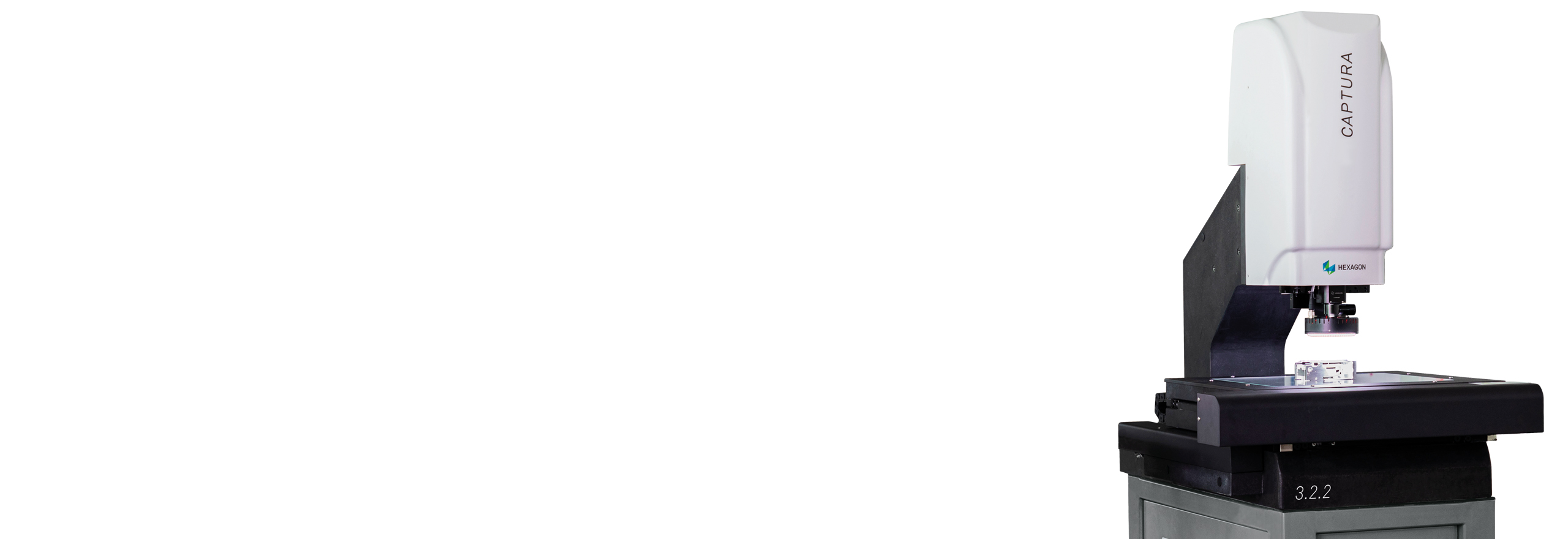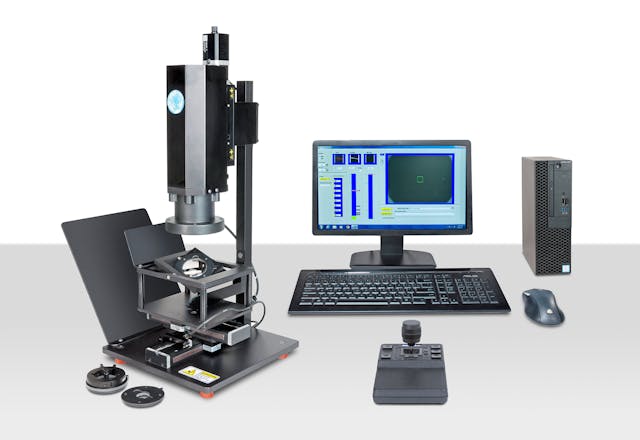Understanding How Optical Measurement Systems Enhance Quality Control Processes
When you're looking to improve quality control procedures, recognizing optical dimension systems is necessary. Let's explore the crucial aspects that make optical dimension a game-changer in high quality management.

The Principles of Optical Dimension Systems
Optical dimension systems play an essential function in ensuring product high quality across various sectors. These systems use light-based technologies to collect precise data regarding physical features, such as measurements, surface area finish, and shade. By utilizing lasers, cams, and sensors, you can accomplish non-contact dimensions that reduce the danger of harmful delicate items.
Recognizing the basics of these systems is essential for effective quality assurance. They operate on principles like representation, refraction, and diffraction, allowing you to assess various products and forms. The accuracy and rate of optical measurements make it possible for real-time surveillance, which assists you determine problems early in the manufacturing procedure.
Moreover, these systems can be integrated with software application for improved information analysis, developing a detailed high quality management approach. By leveraging optical dimension systems, you not just improve productivity however likewise guarantee your items meet rigorous top quality requirements, ultimately improving client fulfillment.
Sorts Of Optical Measurement Technologies
Various kinds of optical dimension technologies are available, each created to meet details demands in quality assurance. You may come across laser triangulation, which determines distance by evaluating the angle of a reflected laser beam. This technology is optimal for catching specific measurements in 3D area.
An additional choice is structured light, where you forecast a collection of light patterns onto a surface to produce a thorough 3D version. This method functions well for complicated geometries.
After that there's interferometry, which can detect minute modifications in surface area accounts by evaluating the interference patterns of light waves. This is particularly beneficial for applications calling for nanometer precision.
You may likewise take into consideration optical comprehensibility tomography, which provides high-resolution pictures of internal features without damaging the things. Each technology offers different requirements, so selecting the appropriate one is important for accomplishing highest control outcomes.
Trick Benefits of Optical Measurement in Quality Control
When it comes to quality assurance, leveraging optical measurement technologies can considerably enhance precision and efficiency. These systems allow you to record in-depth dimensions promptly, decreasing the moment required for inspections. You'll discover that optical dimensions can determine also the smallest defects that might go unnoticed with traditional techniques, guaranteeing product uniformity.
In addition, using optical measurement systems usually brings about minimized waste and rework, as you capture problems early in the manufacturing process. You'll also appreciate the non-contact nature of numerous optical techniques, which lessens damages to delicate parts throughout evaluation. This versatility enables for a wider variety of applications across different products.
With real-time data collection, you can make informed decisions quickly, streamlining your quality control processes (optical measurement system). Inevitably, integrating optical measurement right into your quality control strategy not just increases performance but likewise improves consumer satisfaction by delivering higher-quality items regularly
Just How Optical Measurement Solution Improve Precision and Precision
Optical dimension systems increase precision and precision by improving dimension resolution, allowing you to identify also the tiniest variants. With real-time information analysis, you can make prompt changes and decisions, ensuring your processes remain on track. This mix not just boosts product high quality yet additionally enhances your quality assurance efforts.
Improved Measurement Resolution
By leveraging advanced technologies, optical dimension systems substantially boost measurement resolution, leading to improved precision and accuracy in high quality control. You'll observe a substantial difference in the quality of dimensions, allowing you to determine even the smallest deviations from requirements. Inevitably, enhanced dimension resolution not just improves item high quality but likewise optimizes resource utilization, making sure that you meet client expectations constantly.
Real-Time Information Evaluation
Although conventional measurement systems often depend on delayed information processing, real-time information evaluation in optical dimension systems reinvents the means you keep an eye on top quality. You'll experience better accuracy because you can immediately contrast measurements versus predefined criteria. Additionally, real-time information helps you accumulate valuable understandings over time, tweak your quality control processes.
Integrating Optical Measurement Into Existing Quality Assurance Processes
Incorporating optical measurement right into your existing quality assurance processes can substantially enhance precision and effectiveness. By integrating optical dimension systems, you can improve information collection, minimizing human error while boosting the speed of assessments. Start by determining bottom lines in your assembly line where optical measurements will certainly provide the most worth.
Next, train your group on the brand-new innovation, guaranteeing they understand exactly how to make use of the systems efficiently. This training will certainly aid them interpret outcomes promptly and accurately.
You must additionally establish a procedure for incorporating optical information into your existing high quality monitoring software. This combination enables for real-time analytics and coverage, boosting decision-making.
Consistently evaluate the information and comments from your team to recognize any locations for renovation. With these steps, you'll not only enhance your quality assurance procedures yet also foster a culture of constant enhancement within your company.
Instance Researches: Effective Execution of Optical Dimension Equipments
In this area, you'll explore how optical measurement systems have transformed quality assurance in industries like aerospace and automobile manufacturing - optical measurement. You'll see real-world examples of just how these modern technologies boosted precision and performance. These study highlight the substantial advantages of integrating optical systems into production processes
Aerospace Industry Applications
As the aerospace sector encounters raising needs for accuracy and effectiveness, business are turning to optical dimension systems to boost their quality control processes. These systems, like laser scanning and 3D imaging, supply precise dimensions of parts, guaranteeing they meet stringent safety criteria. A leading airplane producer integrated optical dimension technology to inspect generator blades, decreasing inspection time by 50% while boosting accuracy. An additional case entailed a satellite producer using optical systems to determine complex geometries, which decreased errors in setting up and significantly lowered rework expenses. By taking on these sophisticated technologies, you can not just streamline your high quality control processes however additionally enhance item integrity and security, look at here inevitably resulting in better customer satisfaction and depend on in your aerospace items.
Automotive Production Success
Optical dimension systems have actually likewise made significant strides in the auto production sector, where accuracy is essential to vehicle efficiency and safety. BMW incorporated optical measurement for body setting up, making sure components fit completely, which reduced rework and enhanced production performance. These case researches demonstrate just how optical measurement systems encourage you to achieve tighter resistances, minimize waste, and raise total product top quality.
Future Patterns in Optical Dimension and Quality Control
While improvements in technology remain to improve the manufacturing landscape, the future of optical measurement and high quality control looks encouraging - optical measurement systems. You'll see a considerable change in the direction of automation and AI assimilation, enabling systems to evaluate data in real-time. This indicates quicker decision-making and lowered human mistake, inevitably enhancing product quality
Furthermore, as 3D imaging innovation boosts, you'll profit from even more precise measurements of complicated geometries, making it much easier to keep limited resistances. The increase of cloud-based services will also allow you to access more info here data remotely, facilitating cooperation and improving procedures.
In addition, sustainability will certainly play a crucial function in future advancements. Expect optical measurement systems to concentrate on power performance and waste decrease, lining up with worldwide environmental objectives. By welcoming these fads, you can ensure your high quality control processes remain cutting-edge, aiding your company flourish in an increasingly open market.
Often Asked Concerns
What Industries Benefit The Majority Of From Optical Dimension Solutions?
You'll find sectors such as manufacturing, aerospace, and auto advantage most from optical measurement systems. These fields depend on accurate dimensions for quality control, ensuring items meet rigorous requirements and boosting general operational effectiveness.
How Do I Pick the Right Optical Measurement System?
To pick the ideal optical measurement system, examine your particular demands, think about the kind of dimensions you require, examine the system's accuracy, and ensure it fits your budget and operational needs.
What Prevail Obstacles in Carrying Out Optical Measurement Solutions?
You'll encounter difficulties like assimilation with existing systems, guaranteeing exact calibration, training personnel properly, and managing prices. Identifying these obstacles early aids you develop methods to overcome them and successfully carry out optical dimension systems.

Exist Training Resources Available for Optical Dimension Technologies?
Yes, there're different training sources readily available for optical dimension modern technologies. You can locate on-line programs, webinars, and workshops used by market professionals or organizations. These resources can help you effectively implement and make use of these innovative systems.
Just How Do Optical Dimension Solutions Compare to Conventional Measurement Approaches?
Optical dimension systems use higher accuracy and rate contrasted to standard techniques. They minimize human error, allow non-contact dimensions, and supply real-time data analysis, making them more great site reliable for different applications in quality assurance.
Conclusion

Optical measurement systems improve precision and accuracy by improving dimension resolution, permitting you to detect even the smallest variations.By leveraging sophisticated innovations, optical dimension systems considerably boost dimension resolution, leading to enhanced precision and accuracy in top quality control.Although typical dimension systems often rely on postponed information handling, real-time information analysis in optical measurement systems transforms the way you monitor quality.As the aerospace industry encounters raising needs for precision and performance, business are transforming to optical dimension systems to improve their quality control processes. Just How Do Optical Dimension Solutions Compare to Conventional Measurement Approaches?